The Walhonding River, just downstream of Mohawk Dam — at the start of a canoe trip.
Forty-five years ago I portaged Six Mile Dam on the Walhonding River for the first time. There were 36 souls in our party and 18 canoes. Eighteen very heavy livery grade aluminum canoes. Each loaded with excessive amounts of camping gear.
I took one look at the steep takeout covered with trash and broken glass and proclaimed, “You’ve got to be kidding.”
The first ones to land dragged their canoes out of the way and began pulling the rest of the boats — one by one — up the steep bank, along the top of a dike and lugging them a hundred yards downstream through the Whispering Falls Campground.
We put six or eight people on a boat and carried them fully loaded.
I was glad we’d exhausted our prodigious supply of beer at this point — the last leg of our three-day canoe trip. We started in Loudonville on the Mohican and would finish about nine miles downstream at Coshocton Lake Park on the Walhonding.
The trip covered nearly the entire 24 miles of the Walhonding River. Which starts at the confluence of the Mohican and Kokosing rivers and ends where it joins the Tuscarawas River to form the Muskingum.
In the decades that followed I’d have dozens of adventures on the Walhonding. I’d learn of its rich history and document an important part of it — the removal in 2020 of Six Mile Dam.
I damn near didn’t live beyond that. The following year I capsized a fully loaded canoe in turbulent water caused by the removal of the dam.
In 2025 I hope to see more history made: The Walhonding River is up for consideration for State Water Trail designation. At a stakeholders’ meeting Jan. 28 in Coshocton we were told it could happen as early as this year. Which would be fitting because the Walhonding is the only major stream within the Muskingum River Watershed that has not yet been designated.
Not to be confused with Scenic River designation, State Water Trail status, in the words of the Ohio Department of Natural Resources, is meant to “promote the awareness of public paddling access while increasing safety by partnering with local communities to develop designated water trails on Ohio’s waterways.” That includes uniform mapping, improvement of access sites, and identifying potential hazards.
I can personally attest to two hazards on the Walhonding.
When Six Mile Dam was removed, ODNR officials expected the river to revert to its original course, a left bend at the approach to the former dam. However, the river got the last say, changing its course to the inside of the bend through a canal that had been dug to partially divert the flow. Ironically, that had been done to take pressure off the left side of the dam, which was being undermined by the current. Consequently, during high water conditions, paddlers might encounter a great deal of turbulence in front of Whispering Falls Campground.
The second hazard involves beams left in the river after a bridge was replaced between Warsaw and Six Mile Dam. I’ve dubbed that the “Bridge of Beams.” Not to be confused with the Bridge of Dreams on the Mohican River near Brinkhaven.
The beauty of rivers is that they serve as a link to nature and a connection to our past. I hope the Water Trail designation helps raise awareness of Walhonding River history. That includes four major events:
• Native American history. Like many people, I once mistakenly believed the river derived its name from a word meaning “white woman creek.” Which referred to Mary Smith, who supposedly jumped to her death from White Woman Rock. Apparently, that’s a myth. By more reliable accounts, Walhonding was a Native American term for “river of those who delve.”
• The Walhonding Canal failed to live up to expectations. But it did serve as a conduit to move goods between Coshocton and Cavallo on the Mohican River.
• The Wally Railroad, which replaced the canal as a transportation venue, moving coal to northern markets and passengers between Coshocton and Loudonville.
• Mohawk Dam. Built in the mid 1930s, this dry dam was part of a major flood-control system for the Muskingum Watershed after the flood of 1913, Ohio’s worst natural disaster.
In my dream of dreams, I hope to see the disused campground at Mohawk Dam repurposed to provide a few primitive campsites strictly for paddlers. This would be similar to paddle-in campsites Lake County Park District provides for boaters on the lower Grand River in Northeast Ohio.
By now, the folks at the Corps of Engineers, ODNR, and MWCD probably have grown tired of my constant lobbying (a nice word for nagging). But it would increase opportunities for overnight trips on the Walhonding. Especially with a public campground downstream at Coshocton’s Lake Park.
Those supporting State Water Trail designation for the Walhonding include local government officials along the river corridor, park districts, ODNR, the U.S. Army Corps of Engineers, and Muskingum Watershed Conservancy District.
Muskingum Watershed Conservancy District is spearheading the effort.
I hope you’ll support it as well. I invite you to paddle the Walhonding when warmer weather rolls around. I might just join you. I promise not to nag. Much.
This originally was published as a column in the Ashland Times-Gazette and possibly other Gannett papers.
The Walhonding begins here, at the confluence of the Kokosing River on the left and the Mohican on the right.
Sunset at Mohawk Dry Dam. The gate structure is silhouetted on the right.
A doe pauses on a gravel bar in the Walhonding River to nurse her fawn. I witnessed this while sitting along the bank one evening near the town of Walhonding.
Ken Arthur, who has joined me on a few Walonding River trips, stands in front of the remains of Lock 5 of the Walhonding Canal. The canal and Wally Railroad are part of the river’s rich history. Water Trail designation will help preserve that history by making more people aware of it.
Volunteers rescue mussels for reloaction upstream in preparation for the 2020 removal of Six Mile Dam. The dam impounded water for the Walhonding Canal and later for a hydroelectric plant downstream in historic Roscoe Village.

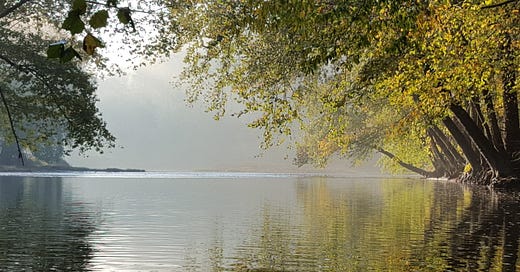



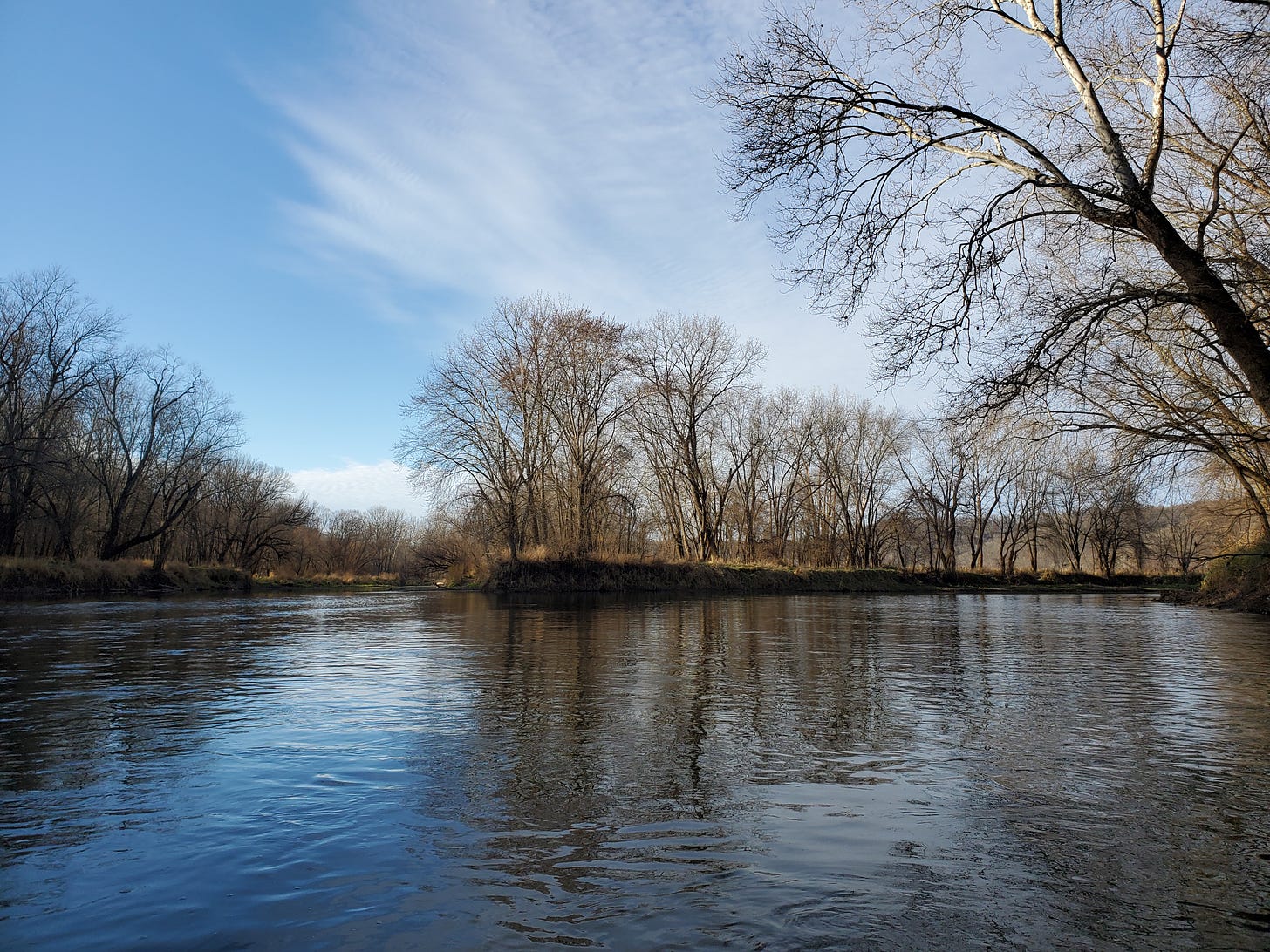
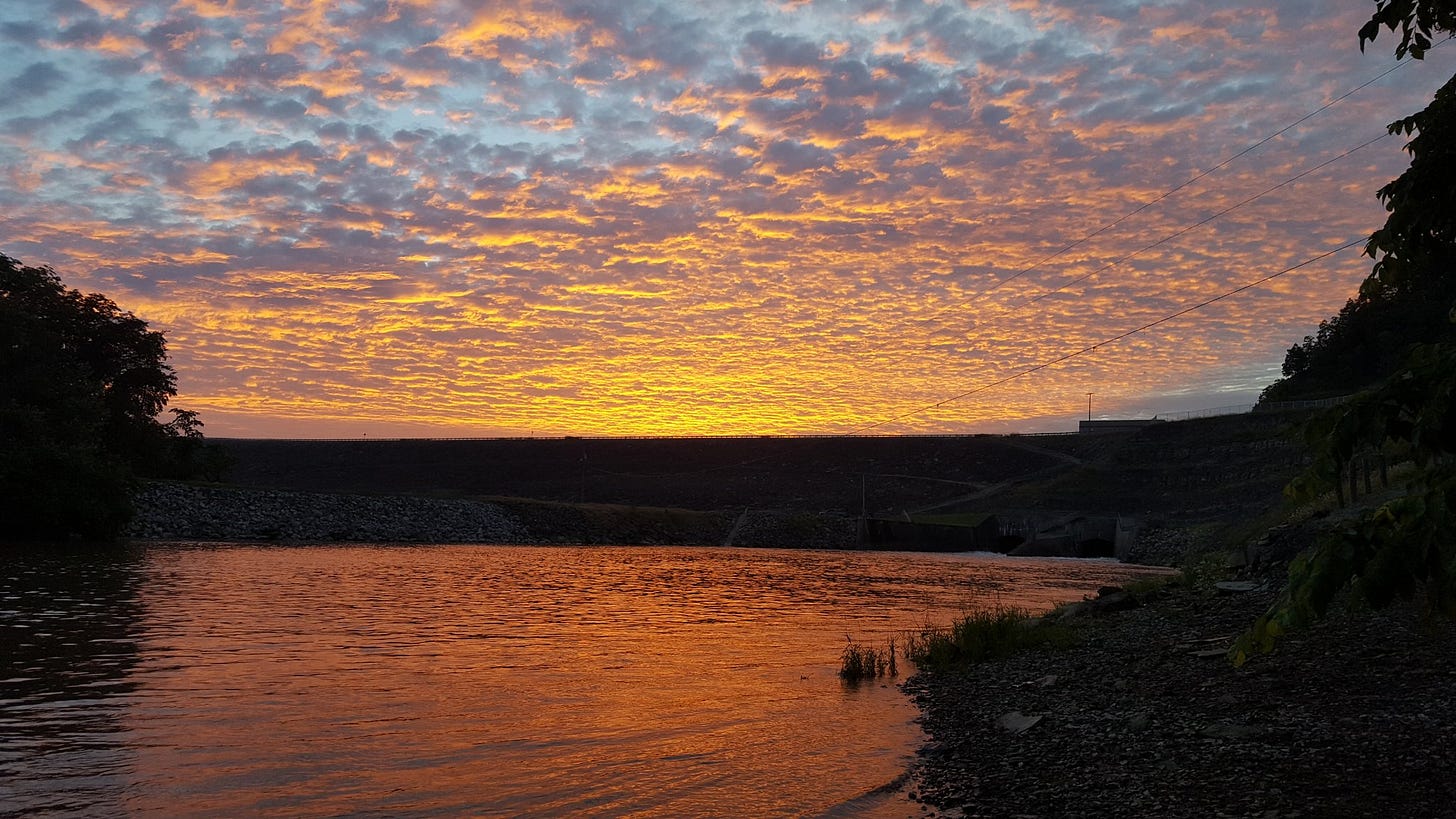
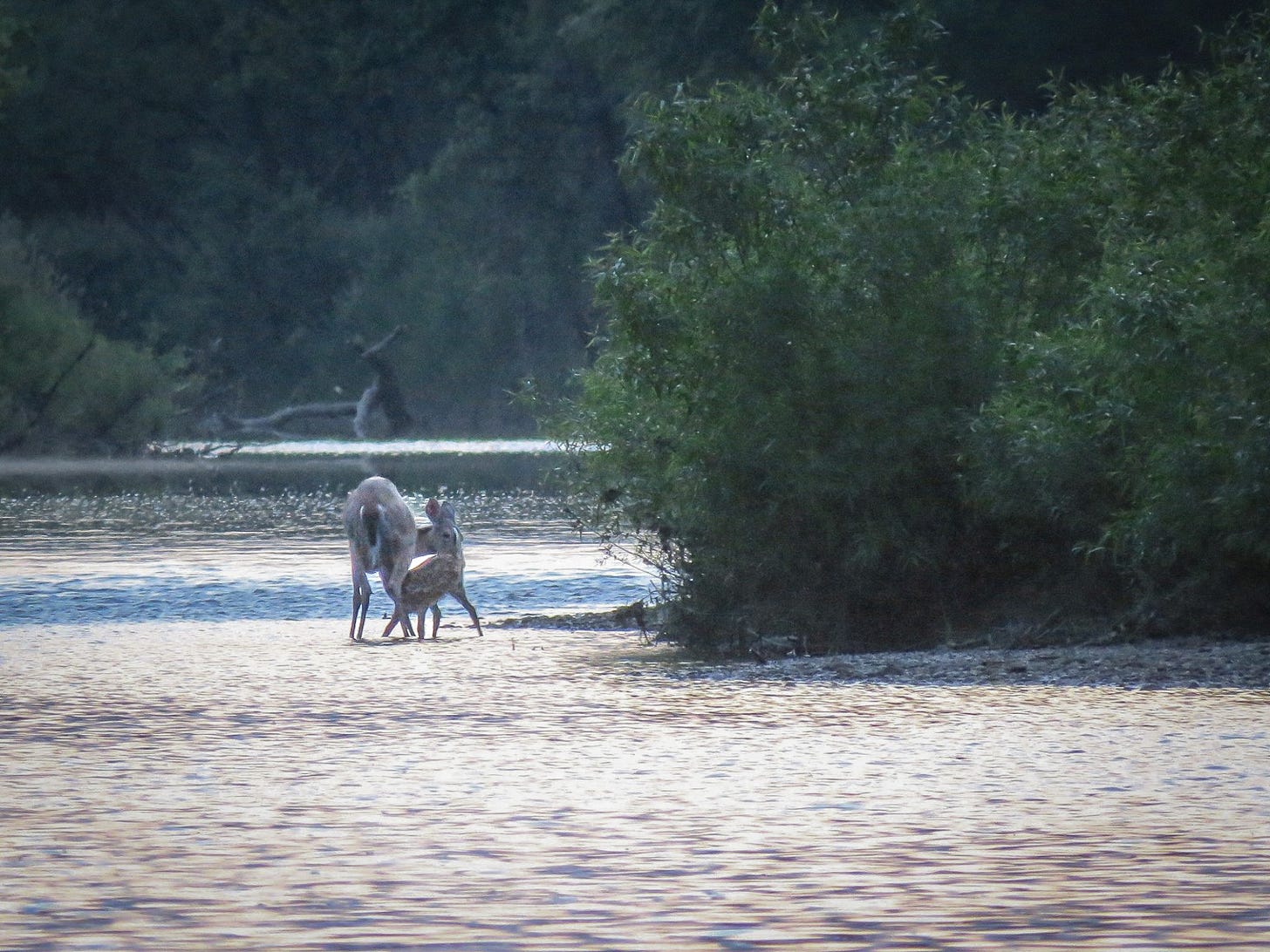
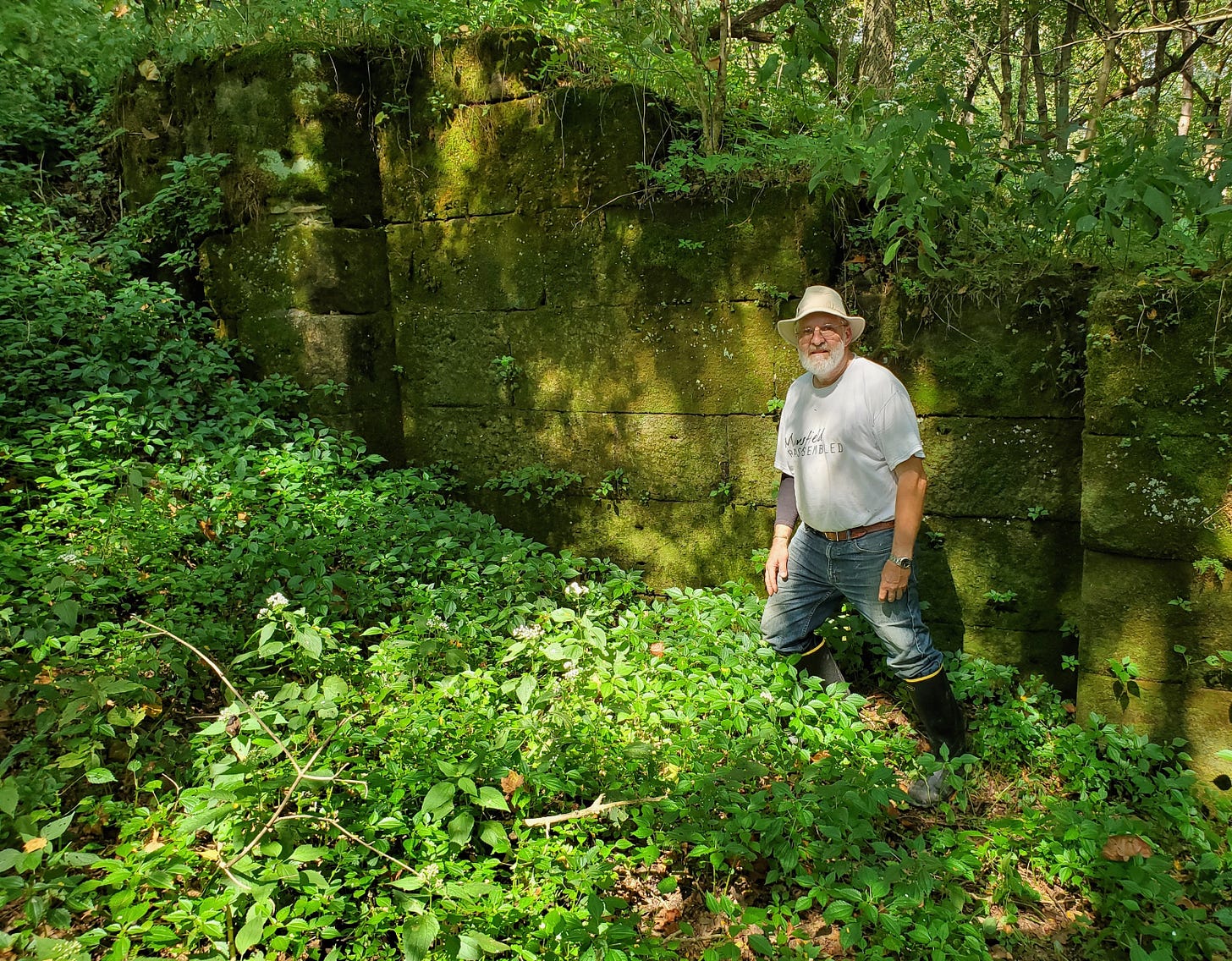
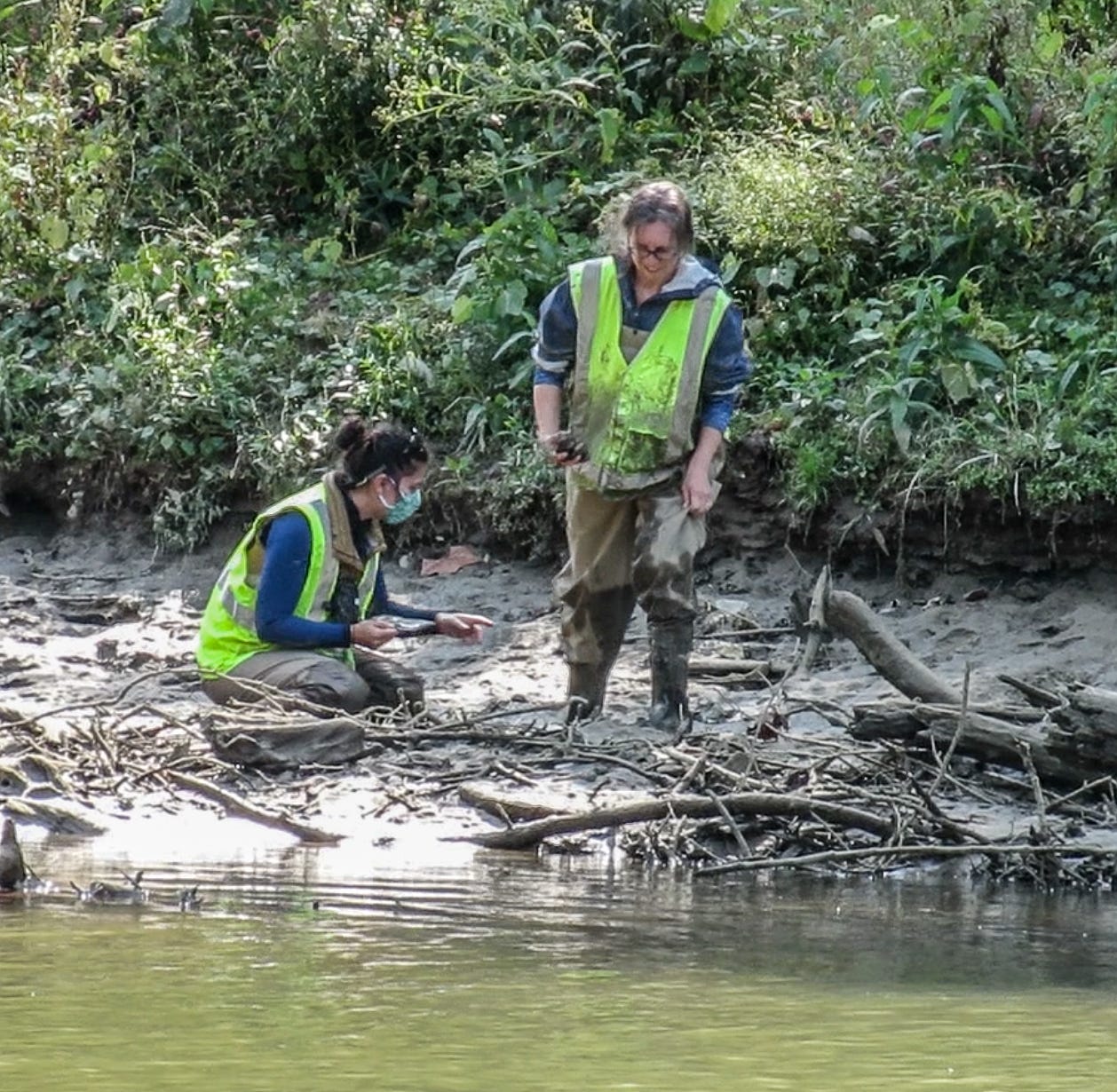
Love this: "The beauty of rivers is that they serve as a link to nature and a connection to our past. '
Very informative. You clearly love your subject. Great photos, too, as always.